Shalimar Garden, Lahore
Mughal architecture is a unique style that emerged in northern and central India during the Mughal era. It is a remarkable synthesis of Indian, Turkish, and Persian architecture. Various subcontinental rulers commissioned the construction of forts, mosques, palaces, tombs, public buildings, mausoleums, gardens, etc., some of which still stand today. During the rule of the fifth Mughal emperor, Shah Jahan – hence the term “golden age – Mughal architecture reached its zenith in terms of development and refinement. This era was distinguished by symmetrical and balanced architecture, meticulous attention to detail, and a robust infrastructure. Shalimar Gardens in Lahore, aptly known as the “City of Gardens,’ is one such site that has been added to the UNESCO World Heritage list.
Several Islamic mystics, poets, and artists visited this park, attracting many locals and tourists today.
History of Shalimar Garden
Mughal Emperor Shah Jahan constructed the huge Shalimar Gardens. The first Shalimar Paradise in Kashmir, established by his father, Emperor Jahangir, in 1620 against snow-capped mountain peaks, inspired him to design this romantic garden. Since Kashmir was far from the Mughal Empire’s capital, Shah Jahan desired a similar garden to be constructed in Lahore to entertain the royal family and nobles of the province.
According to historians, between 1620 and 1630, a flood rushed through Lahore, exposing a stepped landscape at the margin of the River Ravi. Due to its terrain and fertile soil, the location was ideal for constructing a royal garden. Even though it was around a day’s journey from the Lahore Fort at the time, it was chosen as the perfect location for Shalimar Gardens due to its steady water supply.
In June 1641, the development of Shalimar Gardens in Lahore began. It took a group of engineers and architects over 18 months to develop the three-tiered garden complex with artificial water cascades, pools, fountains, and seating, as the topography was radically different from the Kashmiri scenery.
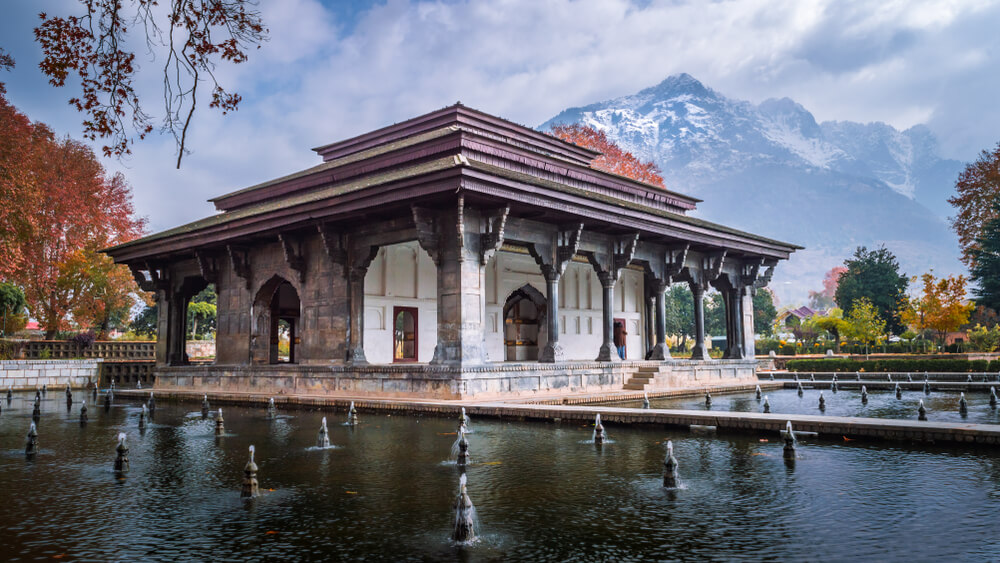
The Arain Mian family once owned the Shalimar Bagh. The family patriarch, Mian Muhammad Yusuf, donated the land to the Emperor to construct the royal garden. However, once built the structure, Shah Jahan appointed the Arain Mian family as its caretaker. Shalimar Gardens remained in their care for about three hundred and fifty years.
Following the fall of the Mughal Empire on the subcontinent, Shalimar Gardens were also severely damaged and destroyed. The marble used to construct the garden was stolen, and its opulent gates were sold.
In 1806, the then-Maharaja restored Shalimar Gardens. Following Pakistan’s independence in 1947, the garden remained one of Lahore’s most visited historical sites. It was also the location of the annual Mela Chiraghan event, which was prohibited in 1958. General Ayub Khan nationalized the Shalimar Bagh four years later, ending the Arain Mian family’s stewardship.
In 1981, Pakistan’s Shalimar Gardens and Lahore Fort were added to the UNESCO World Heritage List.
The Architecture of Shalimar Garden
During their golden age, mosques and forts were adorned with complex designs and meticulous attention to detail, but the Mughals were also masters of other architectural forms. One of the magnificent and tranquil gardens they created was the Shalimar Gardens.
The Shalimar Gardens are the only reason Lahore is known as “The City of Gardens,” even though numerous other important Mughal cities in the subcontinent, such as Delhi, Agra, and Fatehpur Sikri, also feature gorgeous gardens.
Everyone knew of his passion for nature and architecture, so he finished Shalimar in a record-setting year. Khalilullah Khan, a distinguished lord of the Mughal court, oversaw the creation of this extreme collage of natural and architectural elements.
Before the last 150 years, it was designated for court royals but is now used by residents. The general public and tourists can both appreciate the tranquillity of this garden.
Attractions Offered by Shalimar Garden
The Spectacular Water System
You will be astounded when you witness the water system of Shalimar Gardens. For the garden’s irrigation, a canal named Shah Nahar (Royal Canal) was brought in from Rajpur.
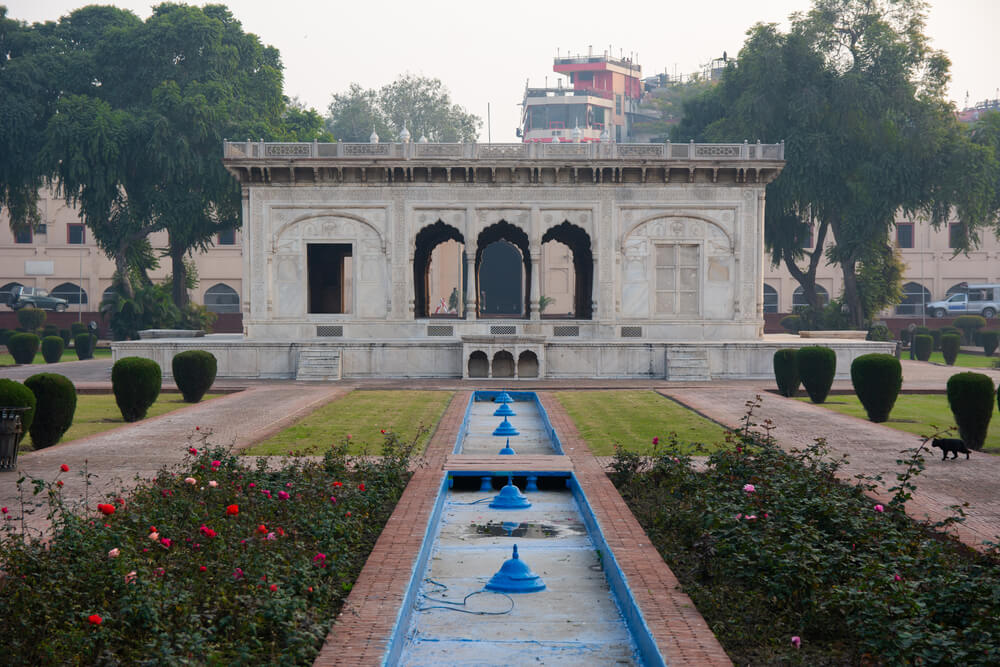
The purpose of fountains for the Mughal dynasties was to increase their allure. When all of the fountains are active, a large number of fountains are charming. The water from the fountains flows into the very magnificent white marble pools. They are well-constructed for their age. It provides visitors with a calming impression. The 410 fountains throughout the gardens are distributed as follows:
- The top terrace contains 105 fountains in all.
- The terrace at the middle level features 152 fountains.
- The lowest level terrace features 153 fountains, the most of any level.
Baradari at Shalimar Garden
Shalimar Park was constructed for the royal family’s enjoyment during their vacation to Lahore, and it has an exceptional Baradari (Twelve doors).
Baradari has exceptional acoustic properties, and such structures were ideally suited for closed-end entertainments that were open yet covered to reduce overcrowding.
It is a stunning building that stands out as a solid structure surrounded by water. It has an incredible effect and is quite appealing. It attracts many people who like its energizing settings.
Farah Baksh
The name of the highest terrace is Farah Baksh (Bestower of Pleasure). It is slightly hidden from view, and it is thought that monarchical women used it for their privacy.
Faiz Baksh at Shalimar Garden
The second level, or mid-level garden, is known as “Faiz Baksh,” which translates to “giver of good.” The terrace at Faiz Baksh was reserved for the Emperor alone. It is regarded as the best spot in the garden since, from this terrace, the entire garden can be seen.
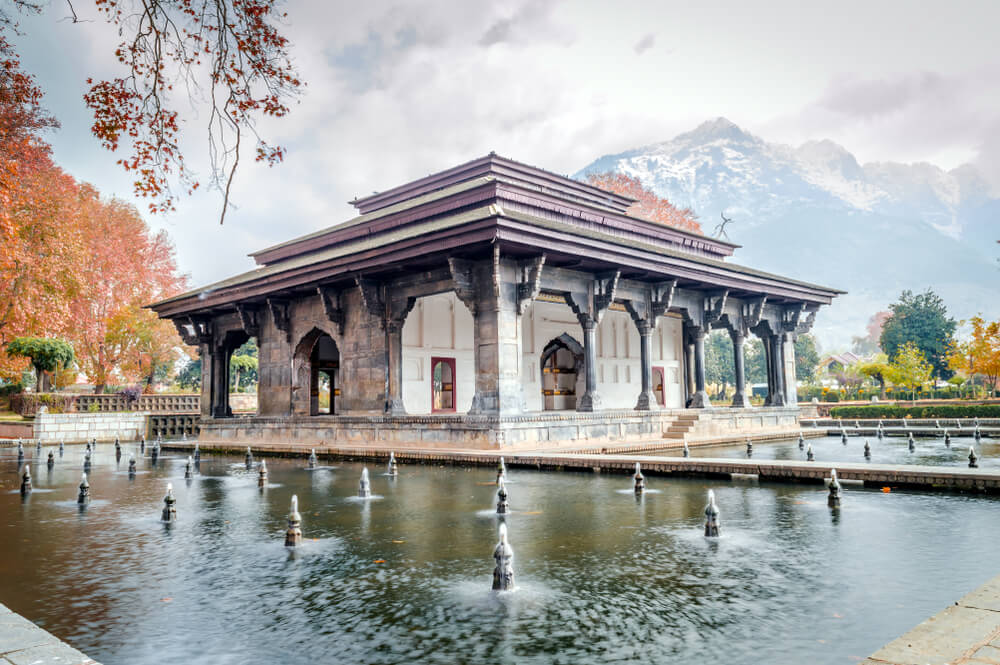
Hayat Baksh
Only the lowest terrace, known as Hayat Baksh (Bestower of Life), had a public entry. It was accessible to court noblemen and authorized restricted public access at times. The ascending hierarchy of the terraces is symbolic of the many social strata in the court.
Diwan-e-Khas-o-Aam
The garden also contains numerous minor structures that serve multiple functions for the royal family. The Aiwan and Diwan-e-Khas-o-Aam are two of the most prominent halls. The former was a magnificent hall with numerous functions, visited by Mughal monarchs.
In contrast, the latter was used to entertain local and international guests. A few summer pavilions are dispersed throughout the area to offer relief from the summertime heat.
Sawan Bhadun Pavilions at Shalimar Garden
The garden was designed as a royal relaxation area and served as the Emperor’s residence whenever he visited Lahore. Several pavilions and summer cottages, also known as Sawan Bhadu Pavilions, were constructed there for this purpose.
Hammam
You will be amazed to learn that the Royal Bath exists and that it contains a concealed heating system. The Royals utilized this bath exclusively. The bath is unique and unparalleled among the Mughal bathing methods.
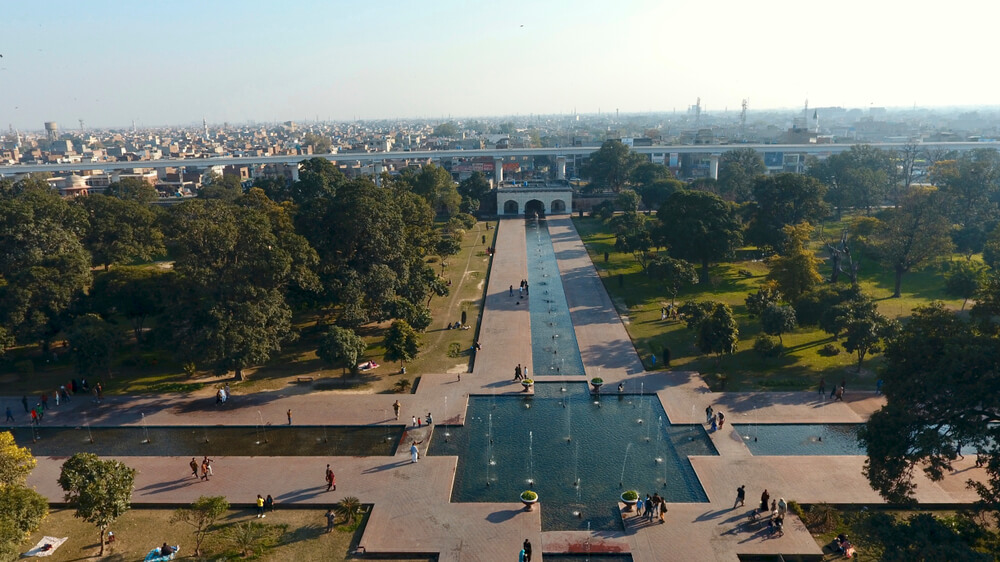
For the Hamam’s water supply, there was a well on the Hamam’s eastern side that delivered water through a brick channel (aqueduct). The track was also connected to the water tank built in the hammam’s southeast corner.
Aram Gah ( Resting Place)
On the uppermost terrace, the present main entrance was originally the Aramgah (rest room) of Shahjahan.
The Aiwan ( Grand Hall)
The Aiwan, or Grand Hall, is the most prominent and stately of the three main pavilions in Shalimar Garden, Lahore. It was built in 1641 by Emperor Shah Jahan as a place for him to hold court and entertain guests.
The Aiwan is rectangular, with a large central hall and two smaller side chambers. It is constructed of red sandstone with white marble inlay work. Today, it is a popular spot for travelers to enjoy the garden views.
Kawabgah of Begum Sahib ( Emperor’s wife)
The Kawabgah is a pavilion used by the women of the royal household. It is a two-story building with a marble platform on the second story. The venue is surrounded by a railing and views the gardens below.
Naqqar Khana
The building on the top terrace to the east, presently known as Naqqar Khana, was formerly known as Jharoka-e-Daulat Khana-e-Khas-o-Aam (the hall window of a unique and familiar audience); to the west was the home of the Empress.
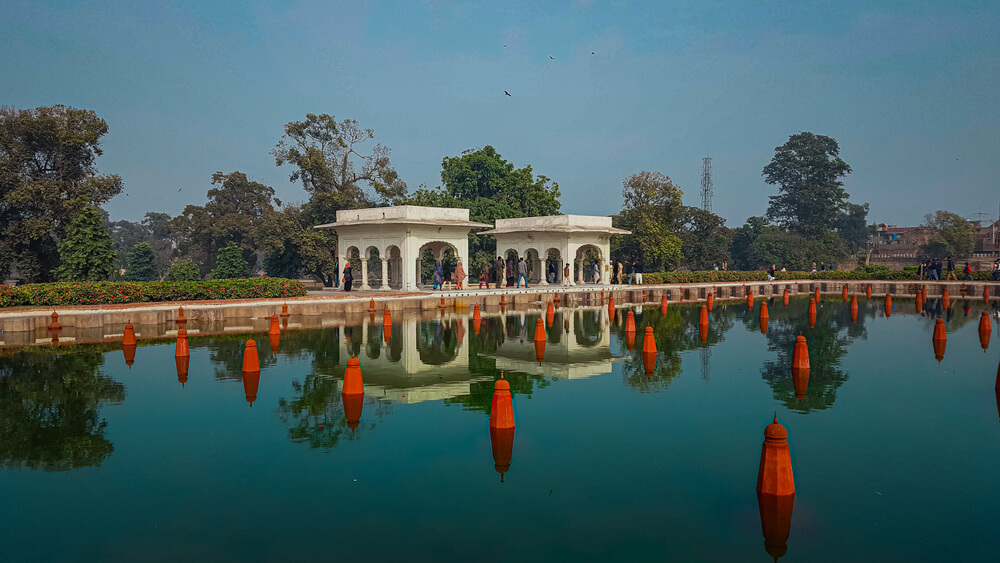
Minarets at the Corners of the Garden
The beautiful garden is laid out in a rectangular shape with four corners. Each corner has a minaret. The minarets are made of marble and are decorated with beautiful carvings.
Restoration of Shalimar Gardens
Substantial restoration efforts have been undertaken since it is believed that the Shalimar gardens were damaged during a battle between Moin-ul-Mulk and Ahmad Shah. The restoration of the parks began, although adequate research was not conducted until recently.
Shalimar Gardens is one of the most gorgeous, awe-inspiring, and well-preserved Islamic gardens, showcasing the architectural and engineering ability of the Mughals. The Lahori trip would be incomplete without a visit to the city’s famous Shalimar Gardens.
Shalimar Garden Lahore Ticket Price
The ticket price for Shalimar Garden Lahore is just Rs 20. For foreigners, it is Rs 500.
Shalimar Garden, Lahore Timings
Shalimar Gardens Timing: 9:00 AM to 6:00 PM
Location & Contact Info
The Shalimar Parks are located on the east side of the Walled City, on the ancient peninsula of Lahore. It is located on Grand Trunk Road and is close to another architectural marvel, the Shahi Qila (Lahore Fort).
Conclusions
Shalimar Garden is one of the finest examples of Mughal architecture, and it is a perfect place to visit in Lahore. It is a vast complex comprising many different sections, each with unique features and charms. The gardens are stunning and well-maintained, and the architecture is simply stunning. If you can visit Lahore, then Shalimar Garden should be high on your list of places to see.
FAQs
Which Mughal ruler built Shalimar Garden in Lahore?
Emperor Shah Jahan built Shalimar Garden in Lahore.
Who built Shalimar Garden in Lahore?
Mughal Emperor Shah Jahan built Shalimar Gardens for his wife, Noor Jahan.
Where is Shalimar Garden located?
Shalimar Garden has located in Lahore near GT road Lahore.
Why is Shalimar Garden famous?
Shalimar Garden was famous for its spectacular water System and its intricate design.
What is inside Shalimar Gardens?
Shalimar Garden consists of fountains, gardens, and three famous terraces.
